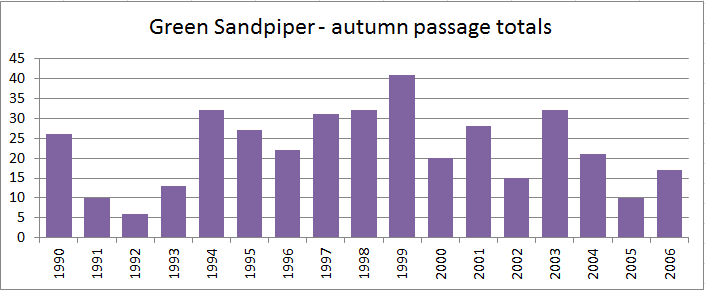Dunlin - 1980s winter atlas
 Friday, September 16, 2011 at 12:11PM
Friday, September 16, 2011 at 12:11PM 
The BTO winter atlas showed that Dunlins were present in several coastal and estuarine 10km squares during the winters of 1981-82, 1982-82 and 1983-84.
The darker the colour, the higher the relative total count for each 10km square. The darkest blue represents over 900 birds.
The distribution is consistent with the Birds of the Estuary Enquiry (BoEE, now WeBS) at that time, with the majority of birds in the inland parts of the Cleddau Estuary complex.The Nevern and Teifi estuaries provided the main wintering grounds in the north of the county.
Graham Rees
 1980s BTO winter atlas,
1980s BTO winter atlas,  GHR,
GHR,  Wader in
Wader in  Dunlin
Dunlin 




